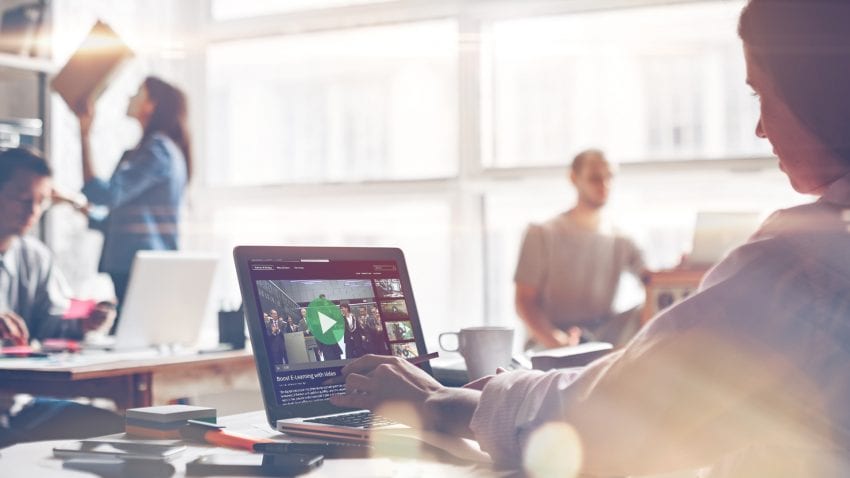Video has taken over the internet. And is quickly become the preferred method for learning online. As a powerful, multisensory learning tool, custom e-Learning videos can engage learners better than any other digital platform.
Different people learn best through different mediums. Videos in learning combine two senses, both sight and sound, which make it one of the most engaging e-Learning tools in the instructional design toolbox.
So, why should you use video in your e-Learning?

1. Video helps boost learner engagement
Whether your learning audience are adults or K-12 students, e-Learning videos can boost learner engagement by 26+%. And while attention spans continue to diminish in our digital world, video can provide a healthy boost for learners.
The maximize engagement, short videos are often better. If you’re creating your own e-Learning videos, try to keep video length under five minutes. Known as microlearning, a series of many short videos is often more impactful of a learning experience than one long video.
2. Video shows skills in action
Better than any alternative online learning tool, the video provides the ability to “show, not tell.” As an instructional designer, this means you can easily provide “how-to” visuals showing the designed learning outcome step-by-step.
For example, let’s say your learning outcome was to teach people how to cook a plant-based recipe. Through an effective e-Learning video, you can visually show the correct way to cook the recipe step-by-step. For additional knowledge retention, we can also show the incorrect way to cook, or simple faults to avoid.
Humans learn best by copying others. A well-designed e-Learning video provides the perfect opportunity to capitalize on this strength.
3. Video provides easy accessibility for point-of-need learning
Learning never happens all at once. It requires long-term dedication and repetition to solidify important concepts.
Video allows learners to access learning content anywhere, anytime. Whether learners are commuting to work or taking a lunch break, they have access to e-Learning videos at all times.

Learners also have the ability to pause and rewind e-Learning videos, providing increased flexibility and customization in their learning experience.
Point-of-need learning is another strength of learning video. Sometimes, employees need to access learning materials on the floor, at a point-of-need. Through short-length, well-organized e-Learning videos, employees have the ability to find the information they need in a timely fashion.
4. Video is easy to share
Just like on social media platforms, e-Learning videos are also easy to share amongst colleagues.
Learning videos that are engaging, interesting, and entertaining provide an opportunity for sharing. And when videos are shared, this means desired knowledge is increasingly permeating through your organization. An ideal situation!
From K-12 educational music videos to plant-based cooking videos, a well-crafted e-Learning video has the opportunity for considerable shareability online.
So that’s it! If you’re an instructional designer or looking to hire an instructional design consultant, make sure to keep video at the forefront of your e-Learning experience.
With its versatility and multisensory learning elements, e-Learning videos have the potential to elevate your learning program and provide a world-class experience for your audience.









